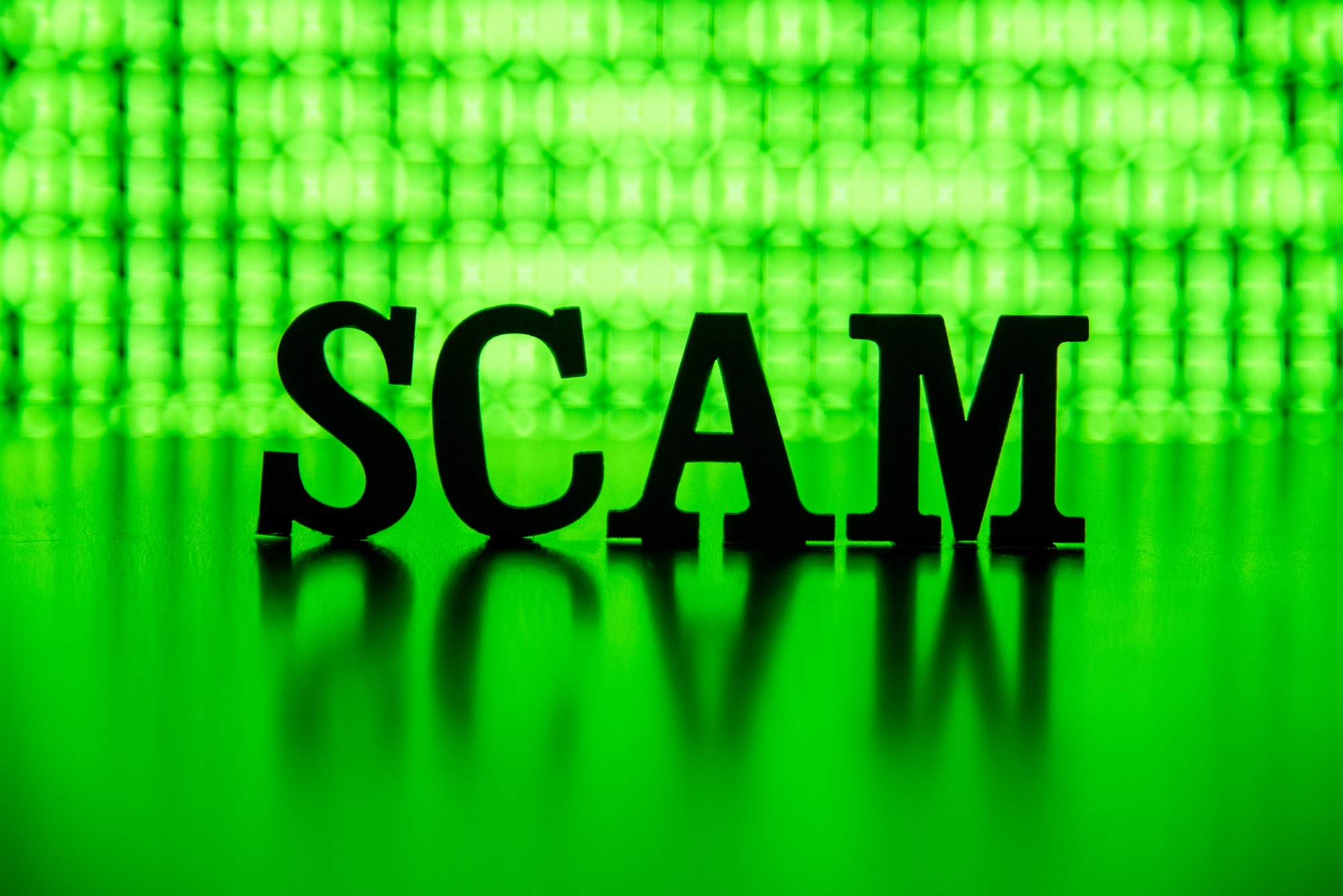Key Takeaways

- NFT Scams Are Rising: The increasing popularity of NFTs has led to a surge in scams, including phishing schemes and fake marketplaces, making awareness crucial for investors.
- Recognize Common Scams: Understanding types of scams such as phishing, fake marketplaces, and pump and dump schemes is essential for protecting your investments in the NFT space.
- Identify Red Flags: Look out for warning signs like unrealistic promises, poor website design, anonymous creators, and pressure tactics to avoid falling victim to scams.
- Conduct Thorough Research: Always verify the credibility of NFT projects by investigating the team behind them, checking reviews, and examining the project’s whitepaper for transparency.
- Invest Safely: Use reputable marketplaces for transactions, double-check information from official sources, and make informed decisions to enhance investment safety.
- Utilize Security Measures: Enhance your protection against scams by employing two-factor authentication, secure wallets, and keeping software updated while using VPNs for added privacy.
The world of NFTs has exploded in popularity, attracting artists and collectors alike. But with this rapid growth comes a darker side: scams that prey on unsuspecting buyers. If you’re diving into the NFT space, it’s crucial to stay informed about the various scams that can put your hard-earned money at risk.
From fake marketplaces to phishing schemes, these scams can be sophisticated and hard to spot. Understanding the common tactics used by scammers can help you protect yourself and your investments. In this article, you’ll discover how to identify potential threats and safeguard your digital assets in this exciting yet treacherous landscape.
Understanding NFT Scams
As NFTs gain traction in the tech world, it’s essential for you to understand the scammers who exploit this market. Awareness of common scams can help protect your digital assets.
What Are NFTs?
NFTs, or non-fungible tokens, represent unique digital assets verified using blockchain technology. Unlike cryptocurrencies, which are interchangeable, NFTs provide ownership of one-of-a-kind items such as artwork, music, and virtual real estate. This uniqueness attracts small businesses looking to engage with new audiences and create innovative marketing strategies. However, their popularity also paves the way for fraudulent activities targeting unsuspecting buyers.
The Rise of NFT Popularity
NFT popularity surged in 2021, with sales reaching $10.7 billion in the third quarter alone. This rapid growth caught the attention of various industries, including art, gaming, and entertainment. For small businesses, NFTs represent a tech-driven strategy for brand engagement and revenue generation. Nevertheless, as the market expands, it becomes a fertile ground for scammers employing tactics such as fake marketplaces and phishing schemes, often disguised as legitimate opportunities. Recognizing these threats is crucial for safeguarding your investments in this evolving landscape.
Common Types of NFT Scams

Understanding common types of NFT scams helps protect your small business from potential losses. Knowledge of these scams allows you to navigate the NFT landscape confidently.
Phishing Scams
Phishing scams target users through various tactics. Scammers frequently create fake websites that mimic legitimate NFT projects or marketplaces. These deceptive sites trick you into revealing sensitive information, such as wallet passwords or private keys. Impersonation of recognized NFT marketplaces or artists also occurs, where scammers set up fake social media profiles to lure you into disclosing personal data. Lastly, be wary of fake alerts; scammers might send emails claiming your wallet is suspended, urging you to verify your account through a link that steals your information.
Fake NFT Marketplaces
Fake NFT marketplaces present another risk. Scammers design these platforms to look legitimate, offering enticing deals on popular NFTs. When you connect your wallet to these sites, they gain access to your assets, leading to thefts. To avoid falling victim, always verify marketplace legitimacy. Check for user reviews and ensure that the site uses secure HTTPS connections before making transactions.
Pump and Dump Schemes
Pump and dump schemes involve artificially inflating NFT prices. In these schemes, scammers promote a specific NFT to create a buzz, often through social media and influencer endorsements. Once prices surges, they sell off their assets, leaving unsuspecting buyers with worthless tokens. Stay cautious about NFT projects that promise quick returns. Conduct thorough research and assess the project’s fundamentals before investing.
How to Identify NFT Scams

Identifying NFT scams requires vigilance and knowledge of specific red flags. Recognizing these warning signs can help protect your small business from potential losses.
Warning Signs to Look For
- Unrealistic Promises: Watch out for projects that guarantee high returns or quick profits. Legitimate investments don’t promise instant wealth.
- Poor Website Design: Examine the project’s website for professionalism. Scam sites often have low-quality graphics, broken links, and grammatical errors.
- Anonymous Creators: Be cautious if project developers lack transparency. Researching the background and credibility of team members is essential.
- Pressure Tactics: Avoid any project that pressures you into making quick decisions, demanding immediate investment or threats of missing out on limited-time offers.
Researching NFT Projects
- Verify the Team: Investigate the creators of NFT projects. Look for their social media presence, past projects, and community engagement. Credibility is essential for trust.
- Check Reviews and Feedback: Search for reviews from other users or collectors. Genuine projects often have a positive reputation among the community.
- Examine the Whitepaper: Analyze the project’s whitepaper. A transparent and detailed presentation of objectives, technology, and roadmap is vital for understanding its purpose.
- Explore Marketplace Listings: Use reputable NFT marketplaces. Project listings on well-known platforms signify a level of validation and safety for your small business’s investments.
Being informed about the tactics used by scammers and following these guidelines improves your ability to protect your digital assets and invest wisely in the evolving NFT landscape.
Protecting Yourself from NFT Scams
Protecting your investments in the NFT space requires vigilance and informed decision-making. Following best practices and utilizing security tools can significantly reduce the risk of falling victim to scams.
Best Practices for Safe Investing
- Research Projects: Investigate the developers behind NFT projects. Look for established teams with transparent backgrounds.
- Verify Information: Confirm details on official websites or reputable sources. Avoid relying solely on social media buzz.
- Be Wary of Promises: Identify unrealistic promises, like guaranteed high returns, which often signal scams.
- Check Community Feedback: Explore user reviews and community discussions to gauge the legitimacy of a project.
- Favor Reputable Marketplaces: Invest through trusted platforms with proven track records to ensure transaction security.
- Avoid Pressure Tactics: Don’t rush your decisions. Scammers often pressure buyers into quick purchases to minimize research.
Utilizing Security Tools
- Two-Factor Authentication (2FA): Use 2FA for your wallet and accounts to add an extra layer of security.
- Secure Wallets: Store NFTs in hardware wallets or secure software wallets to protect them from online threats.
- Browser Extensions: Utilize security-focused browser extensions to detect phishing attempts when browsing NFT websites.
- Regular Updates: Keep all your devices and software up to date to protect against vulnerabilities.
- Use VPNs: Consider using a Virtual Private Network when accessing NFT platforms to enhance privacy and security.
By integrating these best practices and security measures, you can safeguard your digital assets while exploring the opportunities that blockchain technology offers for small businesses.
Conclusion
Staying vigilant in the NFT space is crucial for safeguarding your investments. By understanding the common scams and employing best practices, you can significantly reduce the risk of falling victim to fraud. Always prioritize research and verification before engaging with any NFT project.
Utilize secure wallets and enable two-factor authentication to add layers of protection. Remember that if something seems too good to be true, it probably is. As you navigate this exciting but complex landscape, your awareness and caution will be your best allies in protecting your digital assets.
Frequently Asked Questions
What are NFTs?
NFTs, or non-fungible tokens, are unique digital assets verified through blockchain technology. Unlike cryptocurrencies, which are interchangeable, NFTs represent ownership of a specific item, such as digital artwork or collectibles.
Why are NFTs popular among artists and collectors?
NFTs offer artists a new way to monetize their work and connect with audiences directly. For collectors, NFTs provide a chance to own unique digital pieces, sometimes with added benefits like royalties for the original creator on future sales.
What types of scams exist in the NFT space?
Common scams include phishing scams, fake NFT marketplaces, and pump and dump schemes. Phishing scams trick users into providing sensitive info, fake marketplaces mislead with enticing offers, and pump and dump schemes artificially inflate prices before scammers sell off their assets.
How can I identify warning signs of NFT scams?
Look for unrealistic promises of high returns, poorly designed websites, anonymous creators, and pressure tactics for quick decisions. Always conduct thorough research before investing in any NFT project.
What are the best practices for safe NFT investing?
Research project developers, verify information from official sources, check community feedback, and choose reputable marketplaces. Avoid making quick decisions under pressure to ensure smarter investments.
How can I enhance my security when buying NFTs?
Use two-factor authentication, secure wallets, and security-focused browser extensions. Regular software updates and using a VPN can also help protect your digital assets from potential threats.
What should I do if I suspect a scam?
If you believe you’ve encountered a scam, report it to the platform or website involved and notify authorities if necessary. Always prioritize your security by ceasing all transactions with the suspected scam source.
Are there risks involved with investing in NFTs?
Yes, investing in NFTs carries risks, including the potential for scams and market volatility. It’s essential to stay informed and educate yourself about the tactics used by scammers to protect your investments.
Image Via Envato: RLTheis, AnnaStills, sergign, seventyfourimages



